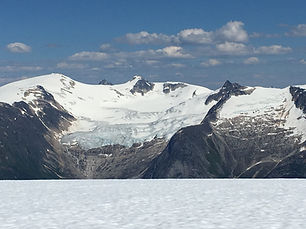Research and Publications
Equity in Stormwater Investments
Measuring Community Engagement and Disadvantaged Community Benefits for Equitable Impact in the Safe Clean Water Program
Aquatic Research
Baseline study of in-stream and floodplain chemistry of coarse woody debris treatment by the PA DCNR at Upper Mountain Creek in Michaux State Forest, Fayetteville, PA

Pennsylvania has the highest stream density in the United States (Klaber, 2014), making management of these resources a difficult and dynamic task. Coarse woody debris (CWD) treatments, a method involving the downing of trees and strategically placing them in a stream, are an increasingly common forestry management practice throughout the United States (Woodall and Liknes, 2008). CWD refers to large, mature trees entering a stream course and altering its flow pattern, such as creating backwaters and pools (Manga and Kirchner 2000). The US Forest Service defines CWD as logs with a diameter ≥ 7.62 cm across a section ≤ 0.91 m long (Woodall and Liknes 2008). It is known to have effects on stream morphology, discharge, nutrient transfer, and biodiversity (Burrows et al. 2012).
Jack Buck, Meredith Jones, Hayat Rasul, Xinyi Wu
Undergraduate Thesis
HYDROGEOPHYSICAL CHARACTERIZATION OF KARSTIC LIMESTONE WITHIN THE VALLEY AND RIDGE PROVINCE AT THE DICKINSON COLLEGE FARM, BOILING SPRINGS, PA
With a changing global climate, it is increasingly important to understand and characterize Earth’s groundwater resources, especially karst aquifers that supply groundwater to roughly 25% of Earth’s population. Groundwater, specifically in karst systems, flows within spatially hetero-geneous pore space. Geophysical methods such as electrical resistivity, seismic refraction, and borehole geophysics can help inform understanding of flow patterns across karst landscapes. Here we present a hydrogeophysical characterization of the karst system at Dickinson College Farm in Carlisle, PA. The Dickinson College Farm lies within a limestone valley in the valley and ridge province in Appalachia whose lands are dominated by agribusiness. The Dickinson College Farm sources its irrigation water from five wells that were drilled in 1996 and have been characterized by downhole methods that describe lithology, resistivity, temperature, diameter, and natural gamma radiation. One drill site was also cored and described in detail. The well field is cored into the Elbrook Formation, a Cambrian formation composed of argillaceous limestone, shale, calcareous shale, dolomite, siltstone, and calcareous sandstone, with limestone as the dom-inant lithology in our study area. Here we combine indirect geophysical methods with the direct observations from boreholes including pump tests, cores, and geophysical well logs. The bore-hole information from the well logs provide vertically dense information whereas indirect geo-physical methods provide valuable lateral geophysical information. The combination of these two scales provide quality information about karst hydrology in this region. Our preliminary re-sults indicate void spacings in the strata that are possible flow paths from aquifers to the well sites. These depths correspond to decreases in resistivity. A seismic refraction survey indicates a pinnacle structure typical of karst systems in the subsurface that is not reflected in its corre-sponding surface topography. This feature along with similar structures in this formation are re-sponsible for the direction of groundwater flow at the DCF.
Presented at AGU Fall Meeting 2018.
Miscellaneous Projects
For more information, please use the email function below
Waves: From the Atlantic to the Pacific
This project focused on the socio-environmental dilemmas that resulted from Hurricane Sandy (USA) and the Tōhoku Earthquake and Tsunami (Japan). The following website contains the fieldwork and interviews conducted to further understand perceptions on environmental and political systems.
A short movie of the experience can be found here:
Arctic and Alpine Research Expedition
This expedition focused on studying climate change impacts on glacial movement and water quality in remote alpine environments, Hoodoo Mountain, BC, Canada.




